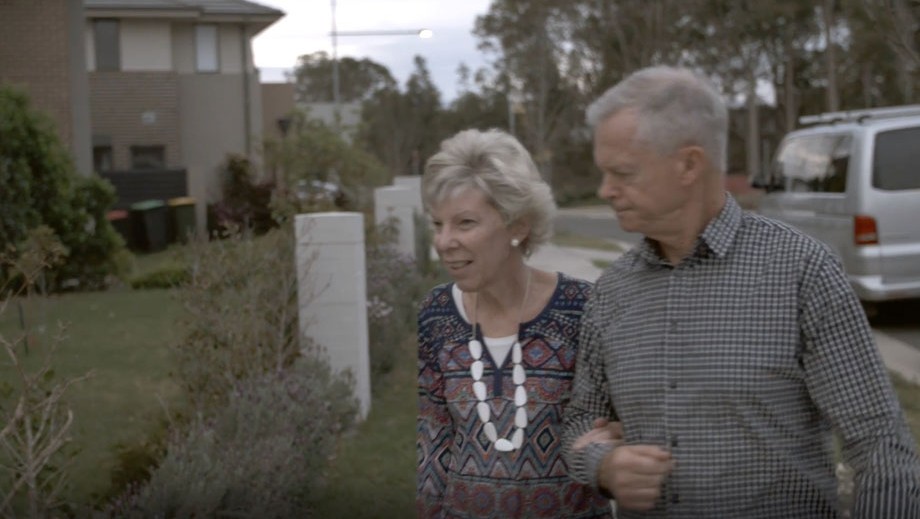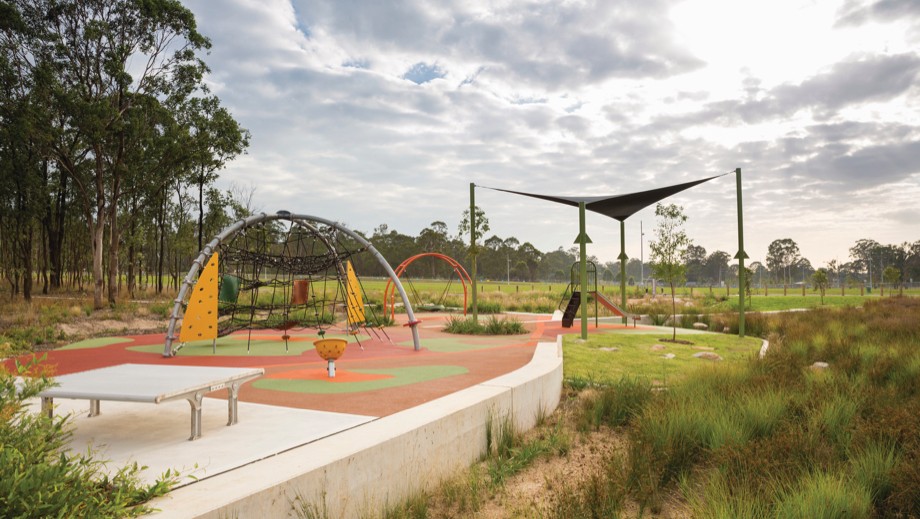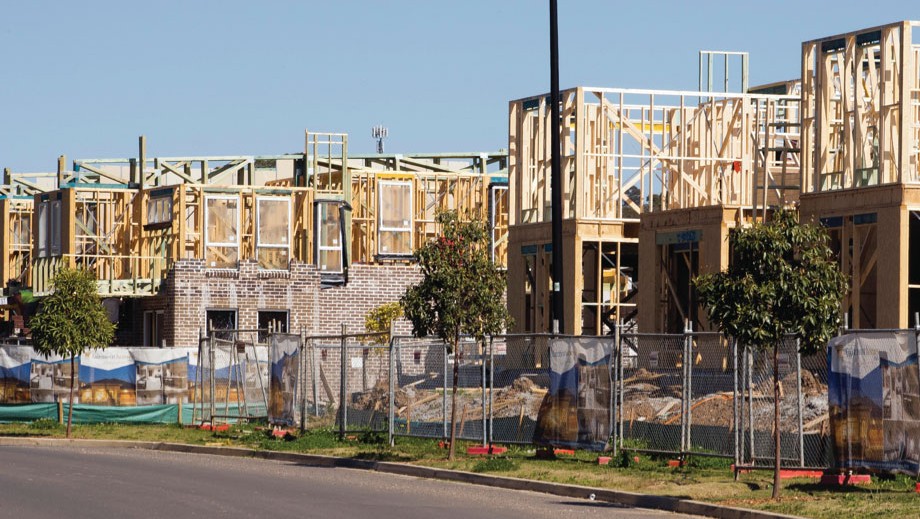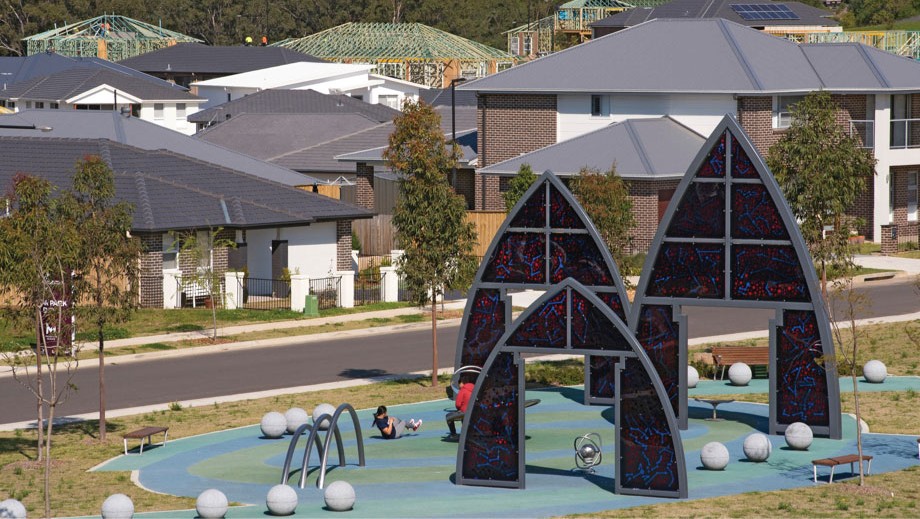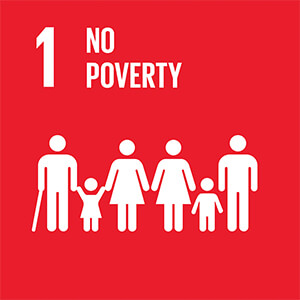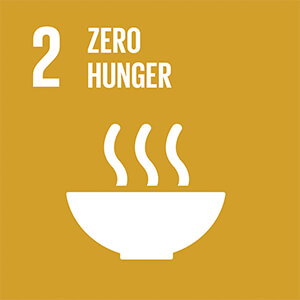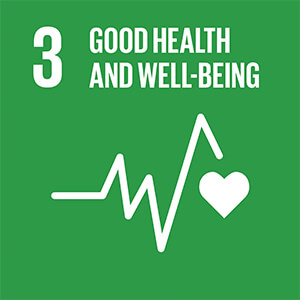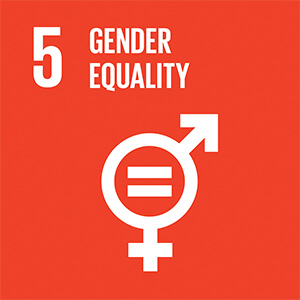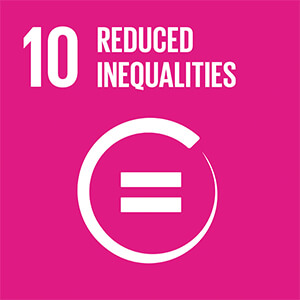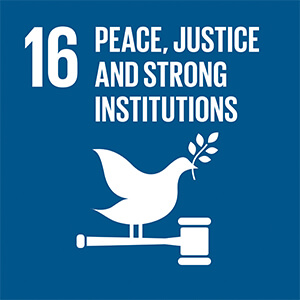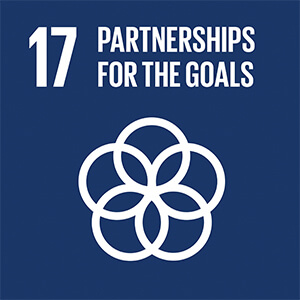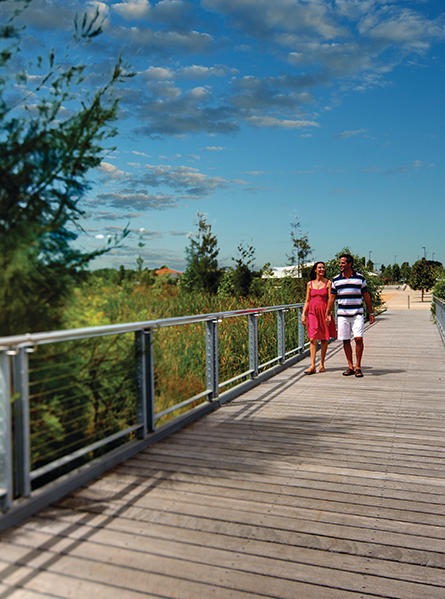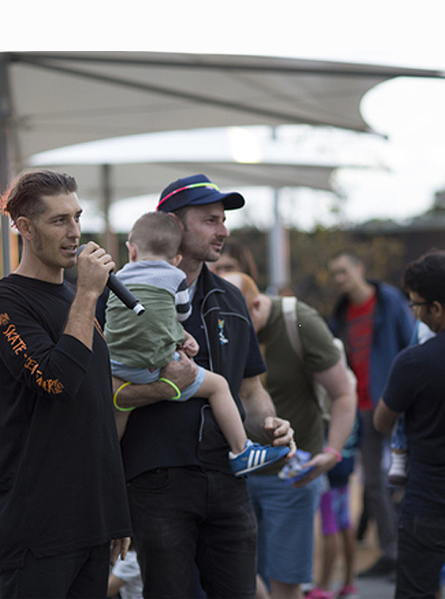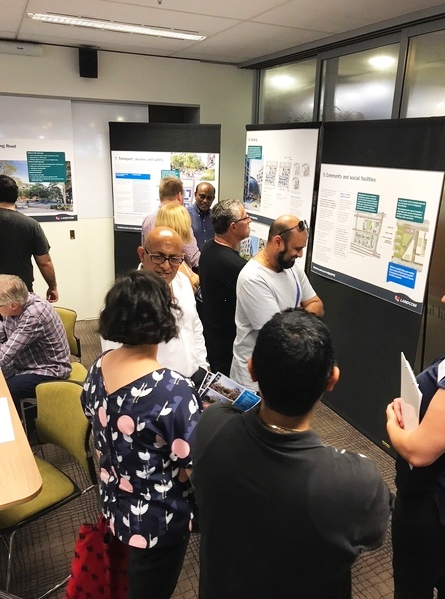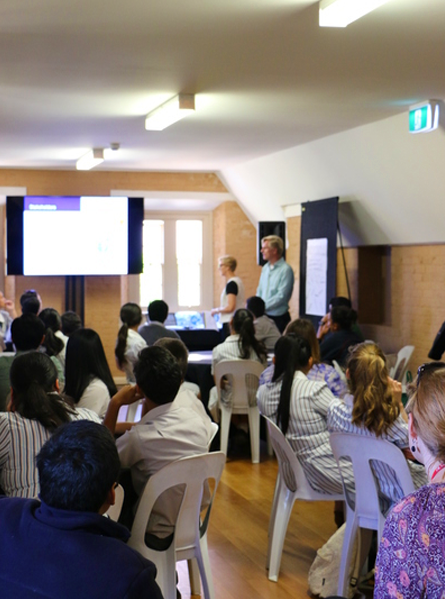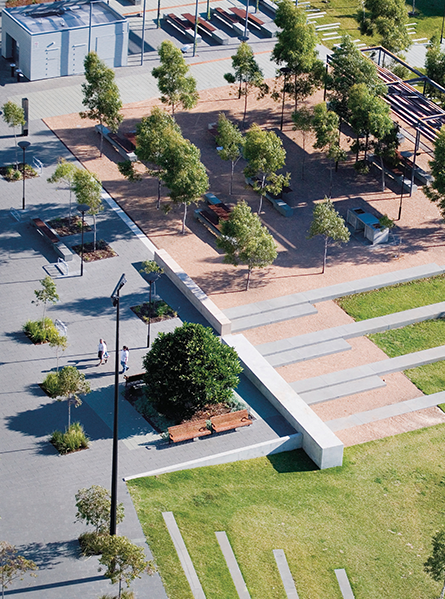Healthy & Inclusive
Places
Objective
Goal
Relevant SDGs
Healthy & Inclusive Places Pillar Overview
Landcom’s Healthy & Inclusive Places pillar is focused on a leadership goal to ‘enhance Landcom’s international status for delivering world class liveable places, founded on equity, affordability and inclusion by 2036’.
This leadership goal was developed to reflect our commitment to meaningfully contribute to the United Nations Sustainable Development Goals27, and reduce the impact of shocks and stresses to communities and infrastructure, such as social cohesion and affordable housing as identified by Resilient Sydney28 (part of the Rockefeller Foundation 100 Resilient Cities Program).
Within this pillar Landcom focusses on how well a place delivers quality of life to its communities and the resilience of those communities. It encompasses economic prosperity and affordability, social stability and equity, accessibility, education, health and wellbeing, and integration of culture and heritage.
Liveable communities are healthy and inclusive. A well-designed community takes into account the needs of people today, and the needs of our future generations. We consider where people will work, learn, spend their leisure time and how they move from place to place. Landcom also believes that the built environment should incorporate green spaces and retain a connection to our natural habitats for the benefit of the environment and our communities.
Landcom addresses liveability through the following focus areas:
- Health, Equity & Inclusion
- Community Connection
- Housing Affordability and Diversity
- Safety & Wellbeing
- Design through Engagement.
Each of these focus areas includes a suite of targets to measure our success.
27 United Nations Sustainable Development Goals (2018) https://www.un.org/sustainabledevelopment/sustainable-development-goals/ to see our full alignment to the SDGs see Appendix B: Sustainable Development Goals Alignment
28 Resilient Sydney (2018) https://www.100resilientcities.org/cities/sydney/
Management Approach
Landcom adopts a holistic approach to the delivery of healthy and inclusive places founded on equity for people of all ages and abilities.
For new projects we undertake social needs assessments to understand what amenities, services or programs are currently available to the immediate and surrounding community, and what gaps may need to be filled. We use this information to inform our future planning for infrastructure and community development programming.
As residents begin to live onsite we commence a continuous feedback loop via our Healthy & Inclusive Places survey (HIPs). This is an engagement tool used to gather data from residents of Landcom communities measuring satisfaction across dimensions such as design, community connection, safety, wellbeing, housing affordability and diversity based on the residents’ lived experience. We have adopted performance targets across these dimensions, striving for continuous improvement to meet the quality of life expectations of current and future residents.
To benchmark Landcom’s results against industry standards the survey also aligns to the Personal Wellbeing Index (PWI).29 The PWI is designed to measure satisfaction with quality of life across seven domains: standard of living, health, life achievement, relationships, safety, community-connectedness and future security. Landcom uses resident satisfaction across the core elements of the PWI30 to measure success against our leadership goal to ‘enhance Landcom’s international status for delivering world class liveable places, founded on equity, affordability and inclusion by 2036’.
We use the results and resident feedback from the HIPs survey each year to drive performance improvements in the way we deliver our projects. This can include adjusting our approach to the design and delivery of future stages of a project or influencing the way we deliver community development programs and services.
Based on the low FY18 performance results against our Community Connection targets we committed to undertake an evaluation of our Community Development and Welcome Program to determine past successes and areas of opportunity. The assessment found Landcom would benefit from an overarching framework to guide the way we approach and deliver community development. A shift to impact reporting would also support consistent evaluation of success and ability to communicate value creation. We are framing recommendations throughout FY20 and will adjust our management approach in our next reporting period.
For our FY19 performance results measured by our Healthy & Inclusive Places survey, see Health, Equity & Inclusion, Community Connection, & Safety below.
29 International Wellbeing Group (2013). Personal Wellbeing Index: 5th Edition. Melbourne: Australian Centre on Quality of Life, Deakin University http://www.acqol.com.au/instruments#measures
30 Our management approach has been refined in FY20 to reflect resident satisfaction against the PWI core elements, rather than reporting the PWI score itself, which does not in fact represent satisfaction as our goal is stated. This adjustment in approach best reflects the intention of Landcom’s long term goal. Performance results for FY18 have been restated where required in line with our refined approach.
Landcom’s Housing Diversity & Affordability Policy was adopted in 2018 to drive the delivery of diverse, affordable and accessible homes. The Policy is a clear reflection of Landcom’s commitment to create more affordable and sustainable communities.
Landcom defines Affordable Housing as dwellings managed or owned by a Community Housing Provider (CHP). CHPs are not-for-profit organisations that build and/or manage housing for eligible people on very low, low and moderate incomes or who are unable to access appropriate housing in the private market.
Landcom’s Housing Affordability & Diversity Policy requires 5-10% of housing in our projects to be provided as Affordable Rental Housing, owned or management by a CHP. The CHP may build the homes, and will manage eligibility and waiting lists, tenants’ services and property maintenance.
We also address housing diversity and accessibility in response to Sydney’s current market conditions. We aim to deliver a range of tenure options for owners and renters, improve the range of home options available in the market especially for first home buyers, and ensure people have the ability to access fit for purpose housing throughout their lifetime.
We complement this by advocating for and requiring homes that embody Universal Design principles and are Livable Housing Australia (LHA) certified.
For our FY19 performance against our Affordability & Diversity targets, see Affordability & Diversity Performance Results below.
We maintain a commitment to excellence in design and meaningful stakeholder participation from all those who have a stake in the evolution of our cities, including the people in the communities that know them best.
In FY19 Landcom established its Design Review Panel (DRP). The DRP provides advice to Landcom on strategies to achieve design excellence and quality of urban design outcomes across our project portfolio. The DRP is comprised of industry experts with experience across design and environmental consultancies, government entities and the development sector. The objectives of the DRP are to support Landcom project teams with a critical design review process, and provide access to industry experts for guidance and support.
As part of our management approach all projects are required to present to the DRP at least once per year, as they progress through the masterplan and design stages. In addition, active projects that make significant reviews to future stages must also present to the DRP. Landcom’s aim is that this robust process will ensure enhanced design outcomes for the communities we deliver.
Landcom’s Join In Framework guides our approach to stakeholder engagement. The framework aligns with the International Association for Public Participation (IAP2) principles. IAP2 ‘seeks to promote and improve the practice of public participation or community and stakeholder engagement, incorporating individuals, governments, institutions and other entities that affect the public interest throughout the world’.31
31 International Association for Public Participation Australasia (2018) https://www.iap2.org.au/Home
Our approach to engaging stakeholders is underpinned by the following principles, which are widely accepted and promoted by engagement advocates in Australia and around the world. We recognise that there’s some overlap of ideas related to each principle and that’s okay because the principles are interdependent.
|
Collaborative Working with stakeholders with an interest in delivering positive project outcomes |
Purposeful Planning and resourcing engagement to support project delivery |
|
Proactive Engaging stakeholders early and throughout project planning and delivery and making it easy for them to participate |
Accountable Being clear about the purpose of engagement, level of influence and how the influence has shaped recommendations and decisions |
|
Inclusive Engaging stakeholders with different needs and interests |
For our FY19 performance against our Design through Engagement targets, see Design through Engagement Performance Results below.
Our Sustainable Places Strategy identifies a number of initiatives as future opportunities to enhance our Health, Equity & Inclusion and Community Connection focus areas. This includes:
- exploring opportunities to positively influence diversity, inclusion and accessibility
- exploring opportunities to advance innovation in education, health and wellbeing infrastructure
- developing a corporate health and wellbeing approach
- piloting diverse housing projects to demonstrate innovation
- identifying mode-shift opportunities to reduce car dependency in appropriate locations.
As part of our FY19 materiality review, diversity, inclusion, health and wellbeing became material matters for Landcom as part of Human Rights and Community Wellbeing & Cohesion.
We have already made progress by adopting a Diversity & Inclusion Policy with associated measures and targets, and established a staff-led Diversity & Inclusion Working Group that meets monthly to drive positive outcomes for the business. In FY19 we also launched LifeStreet as our preferred Employee Assistance Program focused on whole of life support to the individual.
In FY20 we will be updating our management approach to capture and address these matters more strategically.
Performance Results
See below our performance results for each of the reporting areas within our Healthy & Inclusive Places Pillar.
Landcom’s Sustainable Places Strategy addresses Health, Equity & Inclusion, Community Connection and Safety. These focus areas form part of our Healthy & Inclusive Places pillar and represent our social sustainability commitments.
The below table outlines our FY19 performance against our Health Equity & Inclusion, Community Connection & Safety targets.32
32 FY18 results restated in line with our disclosed updated management approach.
FY19 Healthy & Inclusive Places Targets
Performance
2036 Goal: Residents report overall 90% satisfaction with quality of life.
Performance
90% residents report high quality public, active and sustainable transport options to key amenities, services, public transport and employment.
Performance
90% residents report high physical and mental health, reflecting project design, programs or events that encourage active, social and healthy eating lifestyles.
Performance
90% resident overall satisfaction with the integration of culture and heritage into all new projects.
Performance
90% resident reported community cohesion across all new projects, by fostering the integration of community networks and facilities into our projects.
Performance
Achieve a culture of safety throughout our organisation and on all Landcom projects, striving to achieve 90% overall community safety score at our projects.
Performance
Landcom’s Sustainable Places Strategy addresses Affordability & Diversity. This focus area forms part of our Healthy & Inclusive Places pillar and is a representation of our commitment to delivering affordable and sustainable communities.
In FY18 we released our Housing Affordability & Diversity Policy to drive the delivery of diverse, affordable and accessible homes. It’s important that housing types and tenures meet local demographic diversity and affordability needs. We must also ensure the housing we deliver to market remains current and reflects the changing needs of communities and household compositions.
In FY19 our targets related to Affordable Housing and Livable Housing Certification as we had no projects in scope for reporting as no new projects were released to market or sold during the reporting period.
FY19 Healthy & Inclusive Places Targets
Performance
Deliver 5-10% Affordable Housing across the Landcom portfolio.
FY18:
No projects in scope for reporting
FY19:
No projects in scope for reporting
20% of medium to high density dwellings within all new projects achieve Livable Housing Australia Silver Certification (or equivalent).
FY18:
No projects in scope for reporting
FY19:
No projects in scope for reporting
New projects to deliver 10-15% diverse housing.
FY18:
No projects in scope for reporting
FY19:
No projects in scope for reporting
Landcom’s Sustainable Places Strategy addresses Community Engagement and Design. These focus areas form part of our Healthy & Inclusive Places pillar and are a representation of our social sustainability commitments to excellence in design and meaningful engagement with our stakeholders.
Landcom released the Join In Framework in 2018 as part of our commitment to engagement, and established our Design Advisory Panel in 2019 to address design excellence.
FY19 Healthy & Inclusive Places Targets
Performance
All new projects to undergo peer review through the Landcom Design Review Panel (or equivalent).
FY18:
No projects in scope for reporting
FY19:
All new projects to conform with the community engagement policy, Join In Framework, aligned to industry best practice for stakeholder engagement practice.
FY18:
No projects in scope for reporting
FY19:
